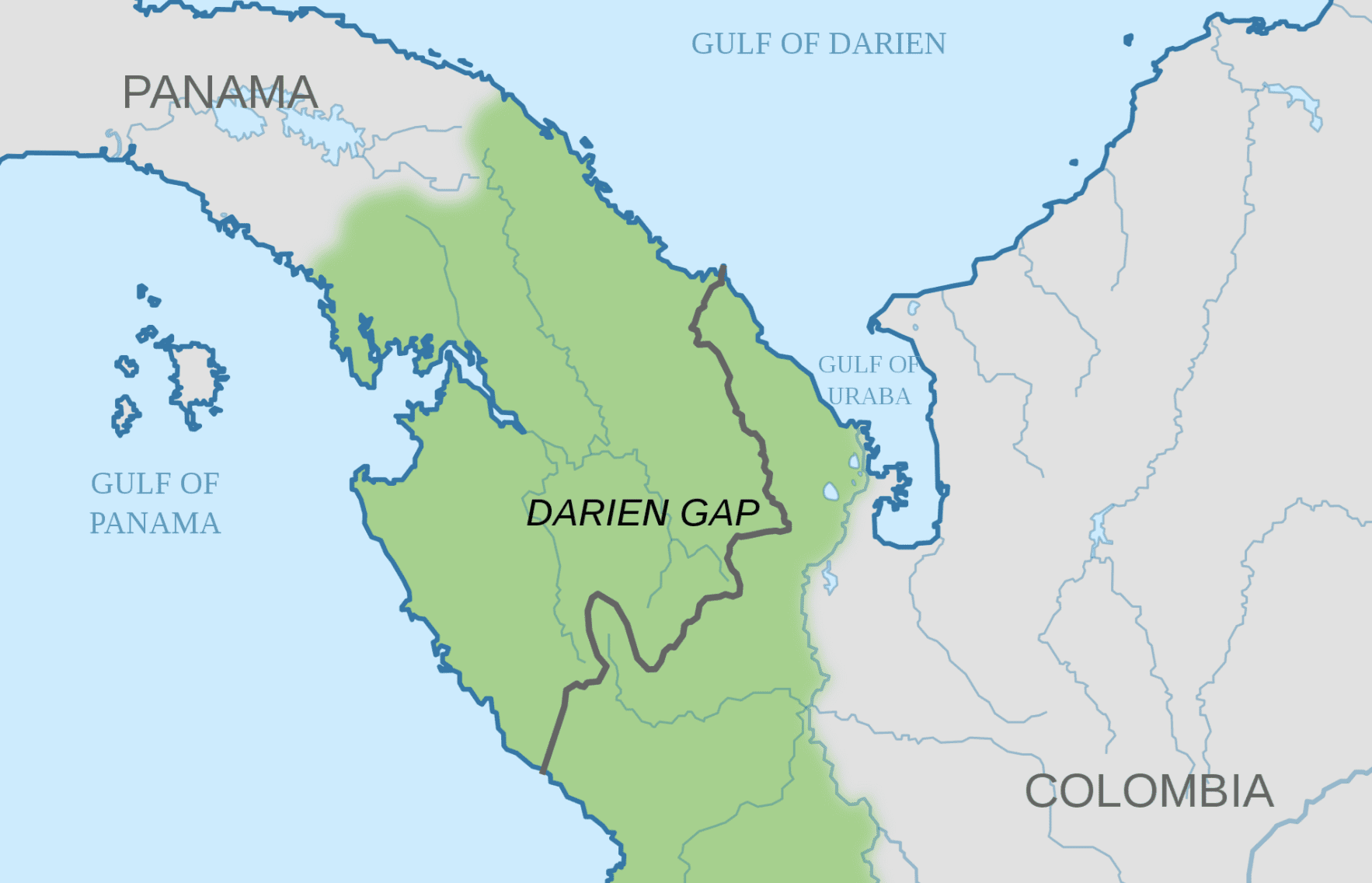With the open-border policies of the Biden administration attracting illegal immigrants from around the world, thousands of people have been hiking through dangerous regions of central America where the question is not if a woman will be raped along the way, but how many times.
A photo obtained by Texas Scorecard shows just how awful this segment of that journey can be.
Poster at Colombian aid station advertising “survival kits” for journey through Darién Gap.
The photo shows a poster listing the contents of a “survival kit” made available to those preparing to cross the Darién Gap—a large area of dense jungle spanning the isthmus between Colombia and Panama—on their journey to the U.S.-Mexico border. On foot the trek through 60 miles of jungle can take upwards of 10 days. Among the items included in the kit are gauze compresses, a “funnel to pee standing up,” condoms, and emergency contraceptive pills.
Migrants traveling through the Darién Gap encounter numerous threats, not the least of which is sexual assault by other migrants or criminal smugglers who pose as guides promising to provide assistance and protection during the dangerous journey. In the depths of the jungle, there is no contact with the outside world, and society’s laws are not enforced. Instead, revolutionary groups and drug cartels compete for dominance, and they routinely prey on vulnerable migrants.
Other potential threats include dehydration, hunger, flash floods, disease, injuries, and animal attacks, any of which can be fatal.
According to the Panamanian government, 248,284 migrants traversed the Darién Gap into the country in 2022, up from 133,726 in 2021 and only a few hundred in 2011. Of last year’s total, 72 percent were male, 28 percent were female, and 16 percent were children or adolescents.
The International Organization for Migration reported that 36 individuals died attempting to cross the Darién Gap last year, but this figure is likely much less than the actual number, as officials believe many deaths are not reported, and it is difficult to recover the bodies of the deceased.
The poster in the photo indicates the location of one of 17 reference and orientation points in Colombia operated by the International Organization for Migration (IOM), a related organization of the United Nations system that aims to “facilitate the orderly and humane management of international migration.” Established in 1951 to provide assistance to displaced Europeans in the aftermath of World War II, IOM has grown to having a presence in 175 countries, employing more than 18,000 people and operating on an annual budget of $1.3 billion.
Also prominently displaced on the poster is the logo for international humanitarian organization CARE, as well as a note at the bottom that “all the products and services delivered by CARE Colombia are free.” Founded in 1945 as an initiative for Americans to send food and hygiene products to loved ones stationed overseas, CARE “works around the globe to save lives, defeat poverty, and achieve social justice,” focusing specifically on the “needs and rights of women and girls.” CARE has had a presence in Colombia since 2018, where they have worked to “prevent, mitigate and respond to gender-based violence” and “promote access to sexual and reproductive rights.”
IOM’s website acknowledges that their reference and orientation points in Colombia are operated with funding from the U.S. Department of State’s Bureau of Population, Refugees, and Migration (PRM). According to a notice of funding opportunities for non-governmental organizations on the department’s website, an estimated $38 million from PRM is available for programs in Colombia for the current fiscal year. That amount is more than 8 percent of the $454 million allocated to PRM for awards, contracts, and grants.
CARE also acknowledges receiving financial assistance from the U.S. Bureau of Humanitarian Affairs (BHA), a division of the State Department under its Agency for International Development. A recent BHA brief indicates that the bureau provided $146 million of funding for NGOs in Colombia in 2022, some of which facilitated the “delivery of dignity and hygiene kits.”
Victor Avila, a former ICE special agent and recently declared candidate for the congressional seat held by U.S. Rep. Tony Gonzales (R–San Antonio), shared his thoughts with Texas Scorecard about those risking their lives to come to the United States.
“A lot of people think, ‘Well, the Biden administration has been very humane by letting everybody in.’ No, it’s inhumane because, really, the girls are getting raped. … It’s not if the women are going to get raped, it’s when and how many times,” said Avila.
“And so you’re putting these people in these horrific conditions because of the invitation of this administration to them. … These people would not be jeopardizing their health, their lives, their livelihood if it weren’t for this administration’s invitation to come to this country.”
Avila explained that there’s a lot of money to be made by exploiting these vulnerable individuals.
He said local vendors at aid stations like the one in the photo will “sell you everything … the mud boots, the rain jackets, all this stuff for you to get ready.”
He also said NGOs give migrants “debit cards with money loaded on them to get them through the finish, to get them through the journey.”
“It’s big business, man, I tell you… People do not see this as an immigration issue. All these people are making money—hand-over-fist money—and the person is just a product,” he added.
In the absence of the Biden administration taking any meaningful steps to stem the tide of illegal immigration, Texas lawmakers have filed a number of bills to address the problem.





